In an 1865 photograph orchestrated by Dante Gabriel Rossetti, Jane Morris fixes the camera with an intense, otherworldly gaze – a working-class young woman transformed into Pre-Raphaelite icon. Her head tilts, heavy dark hair cascading, eyes full of languid intensity.
This arresting image, like Rossetti’s famed painting “Proserpine” modeled on her, has long frozen Jane Morris in the Victorian imagination as an aesthetic muse – the silent beauty draped in art.
Behind her iconic visage lay a formidable creative force and astute mind, a woman who defied Victorian norms and quietly shaped one of Britain’s great design dynasties. In Jane’s story, threads of art, craft, gender and class are interwoven as intricately as one of her own embroideries.
Jane Morris (1839–1914) lived a life that reads like Victorian myth — born Jane Burden in poverty, married to Arts and Crafts titan William Morris, and muse to painter-poet Rossetti. But peel back the mythic image, and you find a multifaceted woman: a skilled embroiderer and designer in the Arts & Crafts movement, a savvy businesswoman within the Morris & Co. firm, a cultivated intellectual who rose above her class, and a figure whose very beauty and bearing challenged her era’s ideals of femininity.
Her legacy, much like the tapestries she stitched, is a rich tableau of art, love, rebellion, and influence. Tracing Jane’s journey from obscure Oxford girl to Pre-Raphaelite muse, her unsung contributions to design, leveraging social networks and personal agency to navigate the fraught roles of muse and artist, wife and independent creator. Jane Morris not only inspired art but made it, defying the Victorian mold and leaving an indelible imprint on cultural history.
Key Takeaways
-
Jane Morris transcended her origins as an Oxford stableman’s daughter to become a captivating muse and pivotal creative force of the Pre-Raphaelite Brotherhood, seamlessly intertwining beauty with artistic brilliance and quiet rebellion.
-
Immortalized by Rossetti’s brush as the enigmatic face of Victorian aesthetics, Jane was far more than muse—she was an accomplished embroiderer, pioneering designer, and savvy entrepreneur whose artistry quietly defined the Arts & Crafts movement.
-
Beneath the alluring mystique captured in iconic paintings lay a woman of profound intellect and subtle defiance, who navigated the intricate tapestries of love, class, and gender, asserting her independence within a society determined to restrain her.
-
Jane’s needlework became a revolutionary act, stitching an enduring legacy that transformed domestic crafts into high art, quietly challenging Victorian industrialism and reshaping the contours of design history.
-
The silent beauty who gazes from Victorian canvases is, at last, given voice—revealing Jane Morris not merely as inspiration, but as co-creator and architect of a movement, a woman whose quiet strength and fierce individuality redefined what it meant to be a muse, a wife, and an artist.
From Oxford Poverty to Pre-Raphaelite Muse
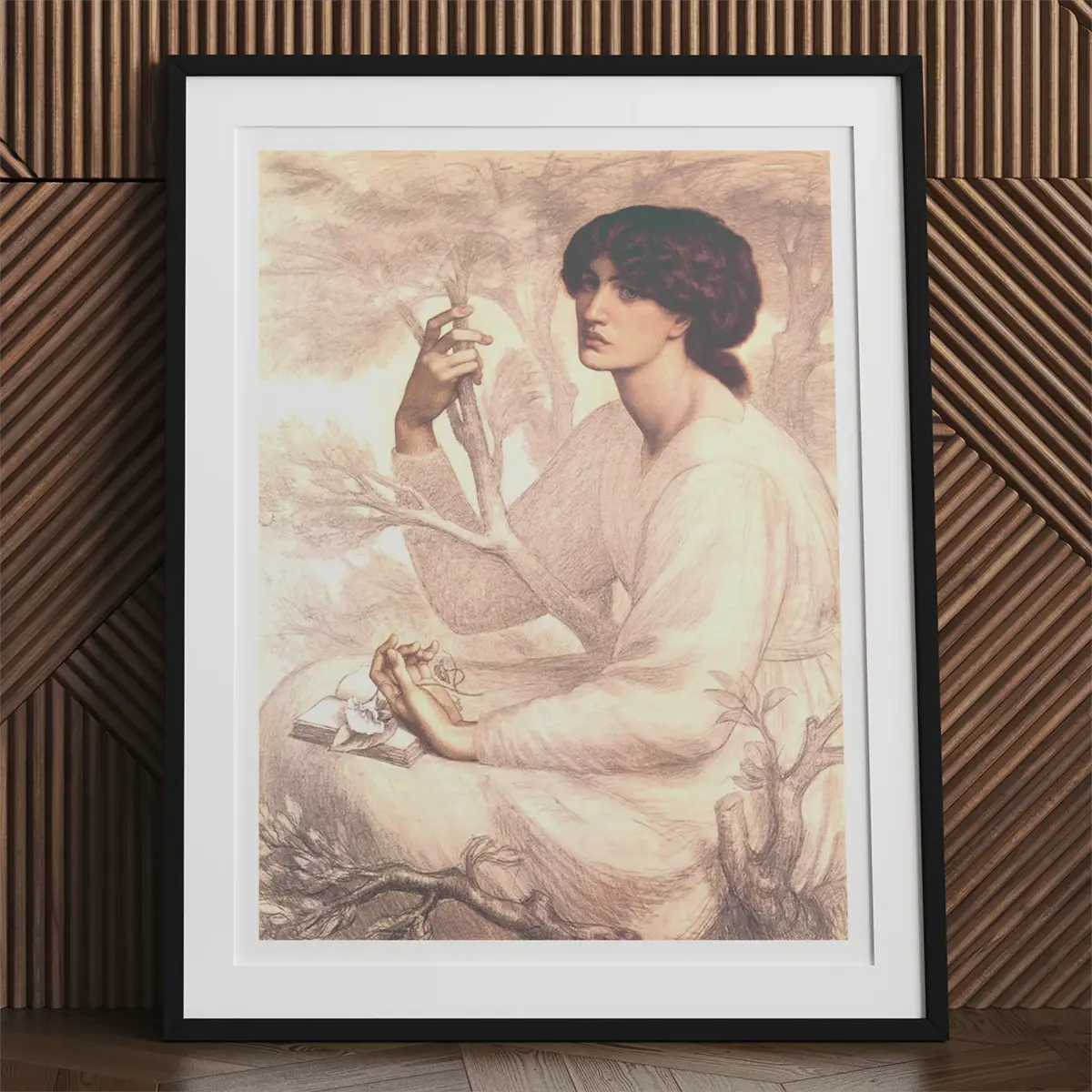
Jane Morris’s story begins in the narrow lanes of Oxford, far from the gilded salons of London’s art circles. Born Jane Burden on October 19, 1839, she was the daughter of a stableman and a laundress, growing up in humble circumstances with little expectation of escaping domestic service.
Fate intervened in 1857 when 18-year-old Jane attended a theater performance in Oxford. In the audience that night were two young artists of the radical Pre-Raphaelite Brotherhood – Dante Gabriel Rossetti and Edward Burne-Jones – in town to paint murals for the Oxford Union. Rossetti was struck by Jane’s unusual beauty, describing her as a “stunner,” and boldly approached her to model for their mural project. In that moment, the trajectory of Jane’s life changed. The girl from St Helen’s Passage was invited into an artistic milieu that prized exactly the kind of “intense” and unconventional beauty she possessed – a look at odds with mainstream Victorian ideals.
For Jane, stepping into the Pre-Raphaelite circle was like walking through a doorway into another world. William Morris – then an aspiring designer and poet collaborating on the murals – soon fell in love with her and painted her as La Belle Iseult, inspired by Arthurian legend, in what would be his only completed oil painting.
Marriage to William Morris
By spring of 1859, Jane and William were engaged. Recognizing Jane’s keen mind beneath her provincial polish, Morris and his peers saw to it that she received an education suitable for a gentleman’s wife. The formerly uneducated Jane eagerly absorbed knowledge: she learned French and Italian, studied literature and music, and became an accomplished pianist.
This self-transformation from a working-class “nobody” into a cultured lady was dramatic – as if Pygmalion’s statue had come to life – yet Jane remained very much the author of her own remake. With education came a newfound poise that enabled her to mingle in the upper-class circles that William’s career would soon draw her into.
In April 1859, Jane Burden married William Morris at an Oxford church, though notably his well-heeled family disapproved and did not attend. The couple began their married life in London, then in 1860 moved into the now-famous Red House in Kent – a bespoke Arts and Crafts home William built to embody his design ideals.
At Red House, surrounded by painter friends and medievalist décor, Jane’s creative talents truly awakened. She worked side by side with William and their circle to craft an environment of beauty, all while bearing and raising two daughters (Jane Alice, called “Jenny,” born 1861, and Mary “May” Morris, born 1862).
It was a domestic life, yet far from ordinary domesticity – their home was a living artistic workshop. “I know her face as well as my own,” Rossetti once said of Jane, but it was at Red House that William Morris came to know her hands – skilled hands that would soon make their mark in design. Jane Morris’s evolution from an Oxford pauper into a Pre-Raphaelite muse and cultured craftswoman was underway, setting the stage for her quiet revolution in art and society.
Embroidering the Arts & Crafts Movement
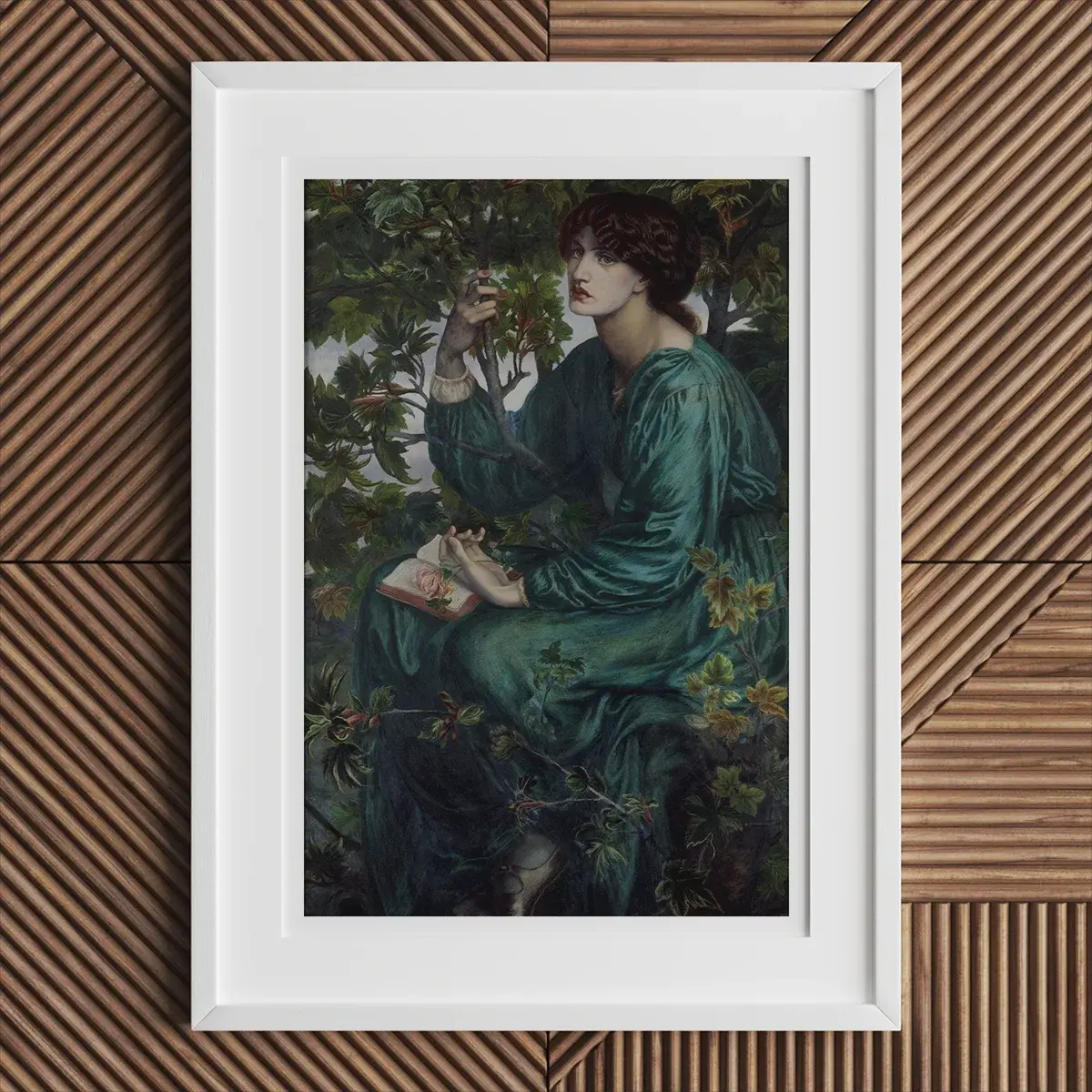
By the mid-1860s, as the Morrises moved back to London and William’s design business took off, Jane had developed into an accomplished designer and embroiderer in her own right. Within the close-knit Arts and Crafts circle, she was no longer just a model for paintings, but a creative collaborator.
Passion for Embroidery
Embroidery, in particular, became Jane’s signature medium – a traditionally “feminine” craft that she elevated to fine art. At Red House, she and her sister Bessie had adorned the walls with embroideries and hangings that astonished visitors with their medieval richness and technical skill. One such project was the Legend of Good Women embroidery panels (c. 1860) – a series depicting heroines of Chaucer in sumptuous silk and gold thread, stitched by Jane and Bessie for the Red House drawing room.
This was no mere hobby. Jane Morris was helping invent a new aesthetic of handcrafted interior design. As a scholar of the Pre-Raphaelite Sisterhood observes, the Morrises’ needlework at Red House “ignited a late-Victorian revolt against industrial production in home and church furnishings”– a rallying cry of the Arts and Crafts movement that would spread widely. Jane’s needle became a revolutionary tool, embroidering the seeds of a design revolution in which beauty and craft countered the ugliness of mass manufacturing.
The Woman Behind the Man
When William and partners officially founded the decorative arts firm Morris, Marshall, Faulkner & Co. in 1861, Jane’s role grew even more critical. She contributed embroidery designs and worked on executing products for the firm (later reconfigured as Morris & Co.), all behind the scenes and largely uncredited.
In the 1860s, it was almost unheard of for a woman – especially one without formal training – to be a driving force in a design business. Yet Jane’s “expert eye for color” and “remarkable technical skill” in textile arts bolstered many of Morris & Co.’s famed creations. She had an intuitive sense for the intricate floral and botanical motifs that defined William Morris’s style.
Much of the embroidered work sold by the firm was done by Jane, their daughter May, and a cadre of artisan women under Jane’s guidance. By the late 1860s, Jane effectively headed the company’s embroidery department – an acknowledgment by William of her superior skills with needle and thread.
Although Morris often took public credit for designs (as was common in that era of patriarchal entrepreneurship), he depended strongly upon her contributions, relying on Jane to realize altar cloths, wall hangings, and elaborate tapestries for clients. Morris & Co. became, in essence, a family business fueled by female artistry.
Breaking Barriers
Beyond the confines of Morris & Co., Jane also accepted private commissions – a bold move for a Victorian woman of her standing. She crafted an embroidered purse in 1878 as a gift for a friend, which today resides in the Victoria & Albert Museum. These personal projects allowed Jane to imprint her own creative voice, not just execute her husband’s ideas. Historian Wendy Parkins notes that such material objects were a means for Jane to “re-present the self who had made the object” – each stitch a quiet assertion of identity and agency.
Through designing and decorating, Jane constructed a space for herself in a male-dominated art world. In many ways, she was a co-founder of the Arts & Crafts movement, as modern scholars have argued. She infused the movement with her labor, taste, and social intuition.
While William Morris is often hailed as the father of Arts and Crafts, one might say Jane Morris was its mother – nurturing its growth through the warmth of domestic artistry and the strength of her convictions about beauty. Her embroideries were not signed, but they had a soulful signature nonetheless, an embodiment of the movement’s ideal that art should be woven into the fabric of daily life.
Pre-Raphaelite Icon of Beauty and Femininity
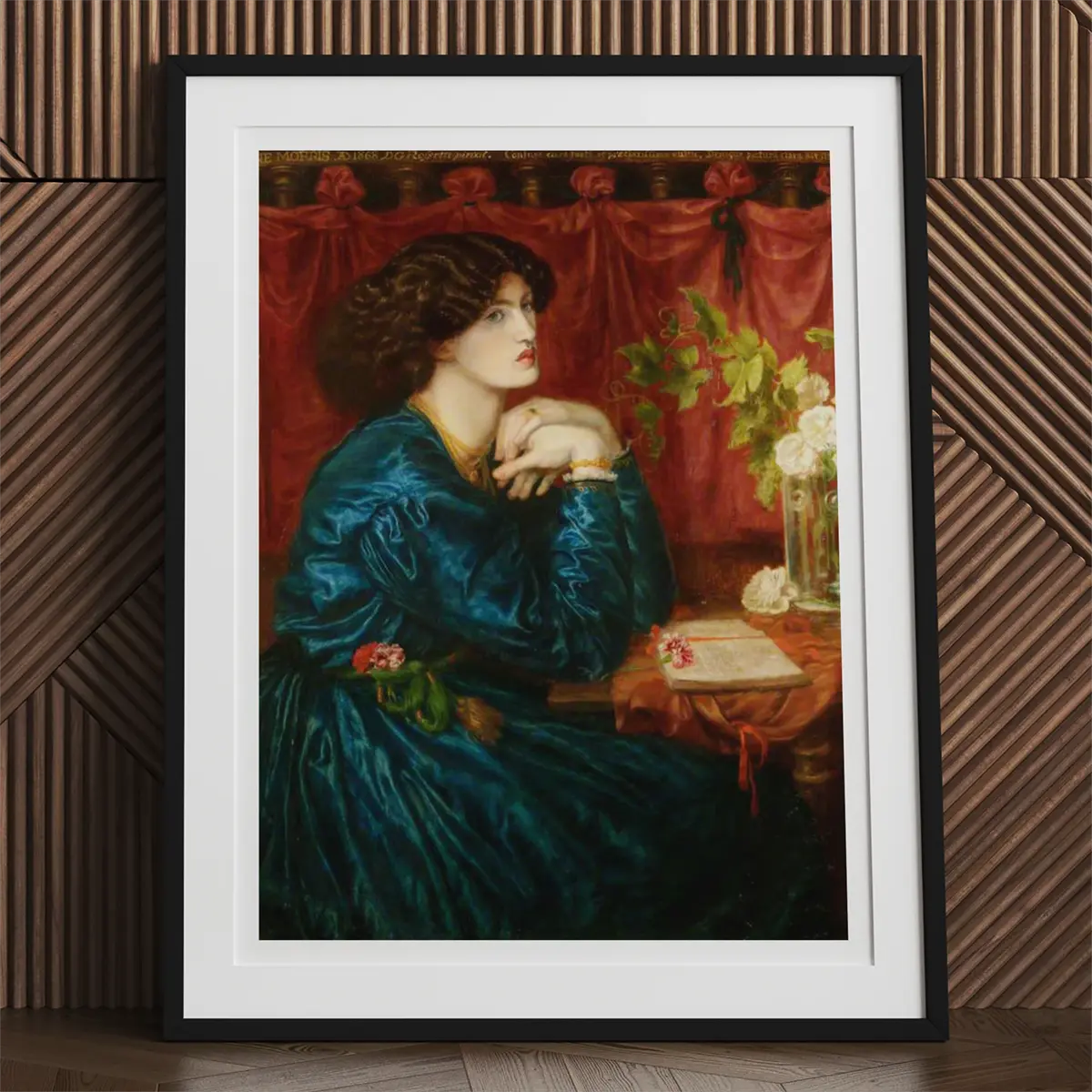
Even as Jane emerged as a creative power in design, she could never escape the public fascination with her appearance. The Pre-Raphaelite Brotherhood had from the beginning celebrated her as a new ideal of female beauty – a living incarnation of the medieval maidens and goddesses they sought to portray.
With her tall, willowy frame, thick wavy hair, strong features and melancholic air, Jane “embodied the Pre-Raphaelite ideal of beauty”. In an era when the fashionable norm for women was the prim, petite blonde in crinolines, Jane’s distinctive look – dark, brooding, even “savage” to some eyes – was nothing short of radical.
Rossetti's Obsession
Rossetti, the charismatic leader of the Brotherhood, became particularly obsessed. Starting in the mid-1860s, Jane was his muse for painting after painting: The Blue Silk Dress (1868), showing her in a sleek sapphire gown leaning on a mantel; La Pia de’ Tolomei (1868), where she is a sorrowful exiled wife in a barren landscape; Mariana (1870), depicting her as Tennyson’s betrayed heroine longing for lost love.
Most iconic of all is Rossetti’s “Proserpine” (1874), where Jane appears as the mythical queen of the underworld, holding a pomegranate in a somber twilight – a vivid metaphor for her own trapped passions. In these canvases, Jane’s image was burnished into legend. She became the face of a new kind of beauty that mingled sensuality with mystery and redefined Victorian femininity in the process.
As one Victorian critic marveled, “There is probably no record of a painter whose personality grew to be so submerged in the form and face of one woman”. Rossetti’s very identity as an artist entwined with the almost hypnotic power of Jane’s visage.
But what did it mean for Jane herself to be so gazed upon, idealized, and mythologized? In private, it was surely a double-edged sword. On one hand, her collaboration with Rossetti was a genuine meeting of minds and hearts – an “open secret” romance that gave her emotional and intellectual affirmation beyond her marriage (more on that soon).
More than a Muse
Being painted over and over as Guinevere, as Astarte, as Proserpina, as an assortment of tragic or enchanted women, risked turning Jane into a perpetual muse, an effigy of someone else’s dream. “Those who knew her only in effigy,” wrote Helen Angeli, a later observer, saw Jane as one-dimensional. The public saw the “languid Pre-Raphaelite ideal” on Rossetti’s canvases – a silent, bewitching figure – and assumed that was the whole of her.
Victorian society had little context to imagine a muse could also be an artist, a beauty could also have brains and will. Thus, Jane’s image shaped perceptions of beauty and femininity in two ways: inspiring new artistic ideals, but also imprisoning her in a stereotype of the “stunner” with soulful eyes and no voice.
Jane subverted this muse role even while inhabiting it. Consider the photographs Rossetti choreographed of her in 1865. These portraits were meant as studies for paintings, but they reveal Jane’s own artistic performance. In them she does not simper or smile as Victorian women were taught to; she confronts the viewer, direct and unashamed, bending her body into serpentine poses that echo the Pre-Raphaelite medievalism.
Jane understood the power of her appearance and leveraged it like an asset, bridging the gap between model and muse. In effect, she co-authored the iconography of the Pre-Raphaelite movement with the men, shaping modern perceptions of beauty. Her bold features and dreamy expression, replicated in countless Rossetti-inspired artworks, set a template for the “bohemian” look that would influence fashion and literature well into the 20th century.
The modern concept of the “artistic femme fatale” or the unconventional beauty owes much to Jane Morris. While Victorian magazines might have derided “aesthetic” women as bizarre, later generations looking back saw Jane as an early archetype of alternative femininity – a woman who was alluring not for her domestic docility, but for her mystery, depth, and artistic aura.
Defying the Victorian Mold: Muse, Wife, and Trailblazer
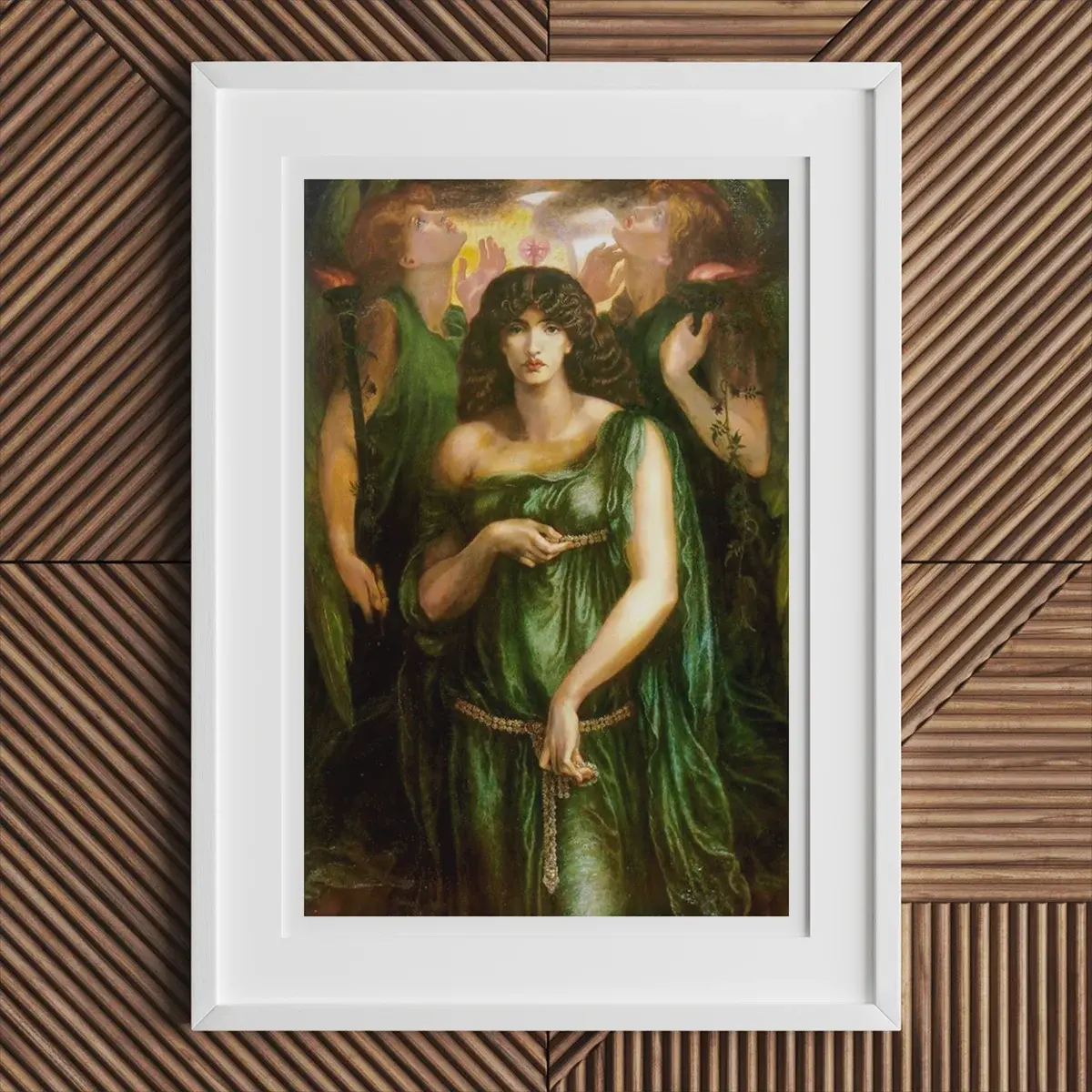
Beneath the silks and canvases, Jane Morris was a flesh-and-blood woman navigating Victorian social constraints with remarkable savvy. In an age when middle-class women were expected to be demure, dutiful wives, Jane boldly defied gender norms and asserted her independence in ways both private and public.
Her very marriage was an exercise in breaking class barriers – a working-class stableman’s daughter marrying a gentleman artist. This leap into William Morris’s educated, bourgeois circle could have left Jane feeling alienated and submissive. Instead, as Wendy Parkins observes, Jane “acquired a way of being-in-the-world” that embraced the dislocation and turned it into opportunity.
Defying Expectations at Every Turn
Jane threw herself into self-education and cultural refinement, not to play the meek wife but to stand as William’s equal in intellect. In letters and comportment, contemporaries noted Jane’s dignified, somewhat aloof presence – she spoke little in public, but when she did her words were pointed and witty, undercutting the trope of the vapid beauty.
One of Jane’s most audacious acts was pursuing her own fulfillment in love and companionship, even if it meant transgressing marital expectations. By the mid-1860s, William Morris was absorbed in work and political activism, and their marriage, while respectful, lacked passion. Jane found affection and artistic communion with Rossetti, and the two entered into a long affair.
Victorian women were routinely condemned for far lesser indiscretions, yet Jane carried on her liaison with a notable degree of autonomy. The affair was an open secret in London, tacitly tolerated even by her husband. William Morris, remarkably, cared more for Jane’s happiness than for propriety – at one point he invited Rossetti to live with them at Kelmscott Manor in an attempt to quell gossip. Though unconventional (even scandalous to outsiders), this arrangement shows how Jane insisted on carving out space for her own emotional life.
Jane was never going to be owned by her husband or defined solely by him. In 1870, she and Rossetti even spent a secluded interlude together at a cottage in Sussex under the pretext of recovering from illnesses– a rare Victorian glimpse of a woman flouting the rules to seize a moment of freedom.
Through these years, Jane adeptly balanced her dual roles: she remained the dutiful Mrs. Morris in public, managing household affairs and supporting William, while privately engaging as Rossetti’s muse and lover, influencing his poetry and art. It was a delicate tightrope walk between respectability and rebellion.
Defying norms was not just confined to romance. Jane also cultivated a network of female friends and fellow creatives, effectively establishing a “Pre-Raphaelite Sisterhood.”
Pre-Raphaelite Sisterhood
Jane was close to Georgiana Burne-Jones, wife of painter Edward Burne-Jones, and through Georgie forged connections in society. She befriended radical women like Mary De Morgan (a fantasy writer) and the artist Marie Spartali Stillman, offering solidarity and inspiration. Marie Spartali, for instance, went on to paint scenes of Jane’s home Kelmscott, no doubt encouraged by Jane’s example of living artfully.
In later years, Jane hosted Rosalind Howard (Countess of Carlisle), a political activist, and even met the scholarly writer Vernon Lee in Italy– encounters that placed her at the crossroads of art, politics, and early feminist thought.
Crucially, Jane mentored her own daughter May Morris, who became a renowned designer. She raised May to value craftsmanship and independence, and by 1885 May took charge of Morris & Co.’s embroidery department, effectively succeeding Jane. In this we see the generational impact of Jane’s quiet feminism: she modeled a different path for women in the arts, one where they could lead rather than assist. The founding of the Women’s Guild of Arts in 1907 by May Morris (to support female artisans excluded from men’s guilds) can be seen as part of Jane’s legacy of empowering women in design.
Social Savvy
Throughout her life, Jane also leveraged social savvy to bolster the Morris enterprise and her family’s stature. While William Morris was a brilliant designer and writer, he was notoriously gruff and not inclined to social climbing. It was Jane who “built connections and customers for Morris & Co. in its early days, serving the finest in London society”.
She had a chameleon-like ability to mingle with aristocrats and intellectuals in drawing rooms, despite her own origins, charming them into becoming patrons of Morris designs. At the same time, she remained true to her own unconventional style – wearing loose, medieval-inspired gowns she sewed herself, with none of the corseted frippery of high society. In one gathering, the sight of Jane Morris in her flowing garments, self-possessed and keen-eyed, among stuffy Victorian matrons, was itself an act of gentle subversion.
Jane refused to conform to feminine norms of fashion and demeanor, yet won respect for her authenticity. “Jane Morris seemingly answered to no one when it came to how she moved through the world,” one account notes; “at a time when she wasn’t even allowed to vote, Jane never stopped defying conventions”. This streak of rebellion, wedded to elegance, made her an enigmatic figure.
Some called her proud or distant, but that was perhaps the price of commanding her own destiny in a society that offered women so little agency. In truth, Jane was exercising what limited choices and influence she had: choosing her lovers, choosing her friends, choosing how to present herself, and in so doing, slowly expanding the possibilities for women who would follow.
Behind the Scenes: Networks, Influence, and Legacy
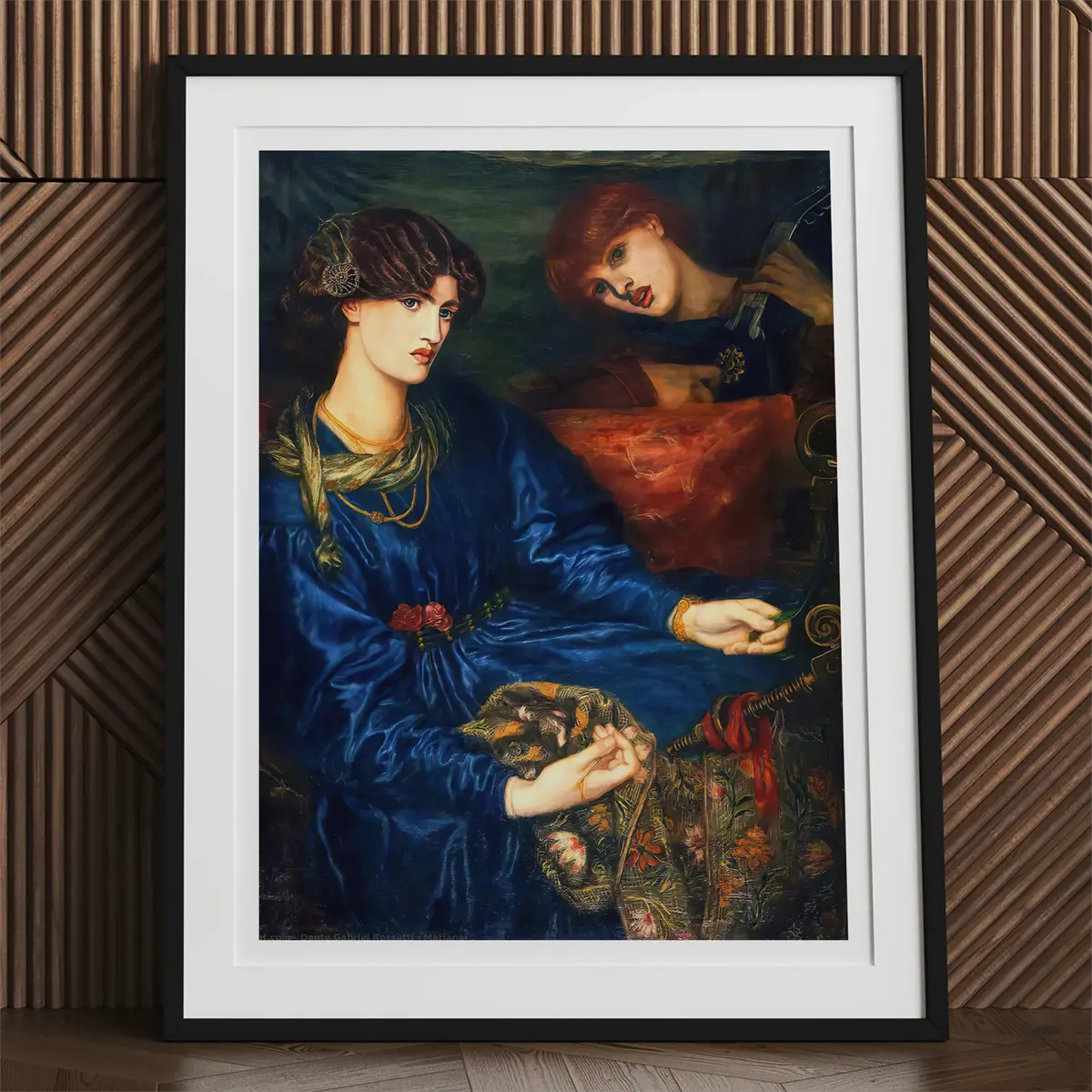
In the background of the Pre-Raphaelite dramas and Arts & Crafts workshops, Jane Morris was steadily weaving a legacy that would long outlast her. She had a strategic sense for the art world’s workings and used her position to shape outcomes.
When Morris & Co. sought commissions, Jane’s friendships often paved the way. Through her intimacy with the Burne-Jones family and others, she gained introductions to influential patrons. The aristocratic Howard family became close friends – she traveled with them in Italy several times – and they in turn commissioned work and connected the Morrises to broader networks.
In August 1883, at the Howards’ estate, Jane was introduced to Wilfrid Scawen Blunt, an adventurer-poet and diplomat. Blunt, smitten by Jane’s history as Rossetti’s muse, embarked on an affair with her that would last the better part of seven years. By then Jane was in her mid-40s, and Blunt in his prime; their romance, conducted in letters and stolen country weekends, showed that Jane remained a vibrant, passionate individual well into middle age.
Blunt’s diaries suggest that Jane found in him great happiness. More than just a late-life love, Blunt became another node in Jane’s web of influence – he was politically connected, and Jane’s association with him kept her mind engaged with current affairs (he was an outspoken anti-imperialist).
Guardian and Champion
All the while, Jane carefully safeguarded the legacy of William Morris and the ideals they had built together. In the 1880s and ’90s, as Morris’s health declined, Jane managed domestic matters at Kelmscott House in Hammersmith, hosting socialist lectures and gatherings of the Socialist League that William founded. Though not a public speaker herself, she was fully supportive of Morris’s radical politics, providing the hospitable home environment from which new ideas could sprout.
Suzanne Fagence Cooper’s recent joint biography of the Morrises argues that the stimulating artistic and social milieu of their home “is largely the product of Jane Morris’s unglamorous, uncredited domestic labour”. Jane was the one “organising trips, parties, and dinners, making and maintaining friendships and business connections,” all of which underpinned the creative and political work of the household. In essence, she acted as a Victorian-era producer or facilitator – the behind-the-scenes force without whom William Morris might never have achieved as much as he did.
It is telling that after William’s death in 1896, Jane did not retreat into widowhood. Instead, she took decisive steps to preserve his legacy and her own place in it. She commissioned architect Philip Webb (their old friend from Red House days) to design two cottages in the Cotswolds as a memorial to Morris. She also fulfilled a dream they shared by purchasing Kelmscott Manor outright in 1913– securing the beloved country home that had symbolized their ideals of beauty, simplicity, and Medieval reverie. This act ensured Kelmscott would remain a touchstone for the Arts and Crafts ethos and eventually a heritage site. Jane was literally building monuments to the world she and William had created, even as time moved on.
Legacy Rewritten
As years passed, public perception of Jane herself began to shift. Early biographers of William Morris downplayed her, some even casting her as a morose invalid who languished on sofas (an image popularized by caricatures of l’art pour l’art “aesthetic” women). But those who knew the truth understood Jane’s strength.
After William’s death, her daughter May and friends like Sydney Cockerell (the preeminent museum director and Morris executor) respected Jane as the matriarch of the Morris legacy. She handled Morris’s papers and correspondences for publication, and guided May in establishing the Morris estate.
In 1899, when the first major biography of William Morris was published by J.W. Mackail, Jane’s role was perhaps under-credited – a fate common to wives of “great men.” However, Jane lived long enough to see the seeds of her reappraisal planted. In the early 1900s, she was visited by younger admirers who saw in her not just “Mrs. Morris” but a fascinating figure in her own right.
One can imagine Jane in her seventies, at Kelmscott Manor’s garden, still carrying herself with that signature enigmatic grace, speaking with gentle wisdom to those who inquired about the old days of Rossetti and Swinburne. She had outlived nearly all the Pre-Raphaelites (Rossetti died in 1882, Burne-Jones in 1898) and even outlived Queen Victoria.
On January 26, 1914, Jane Morris died at age 74, quietly in her sleep after a short illness. The era of Victorian muses had truly come to an end. But Jane’s story was far from over – it would be taken up by later generations, intent on unraveling the enigma of this woman who was both muse and maker.
Reappraisal: From Muse to Equal Partner in History
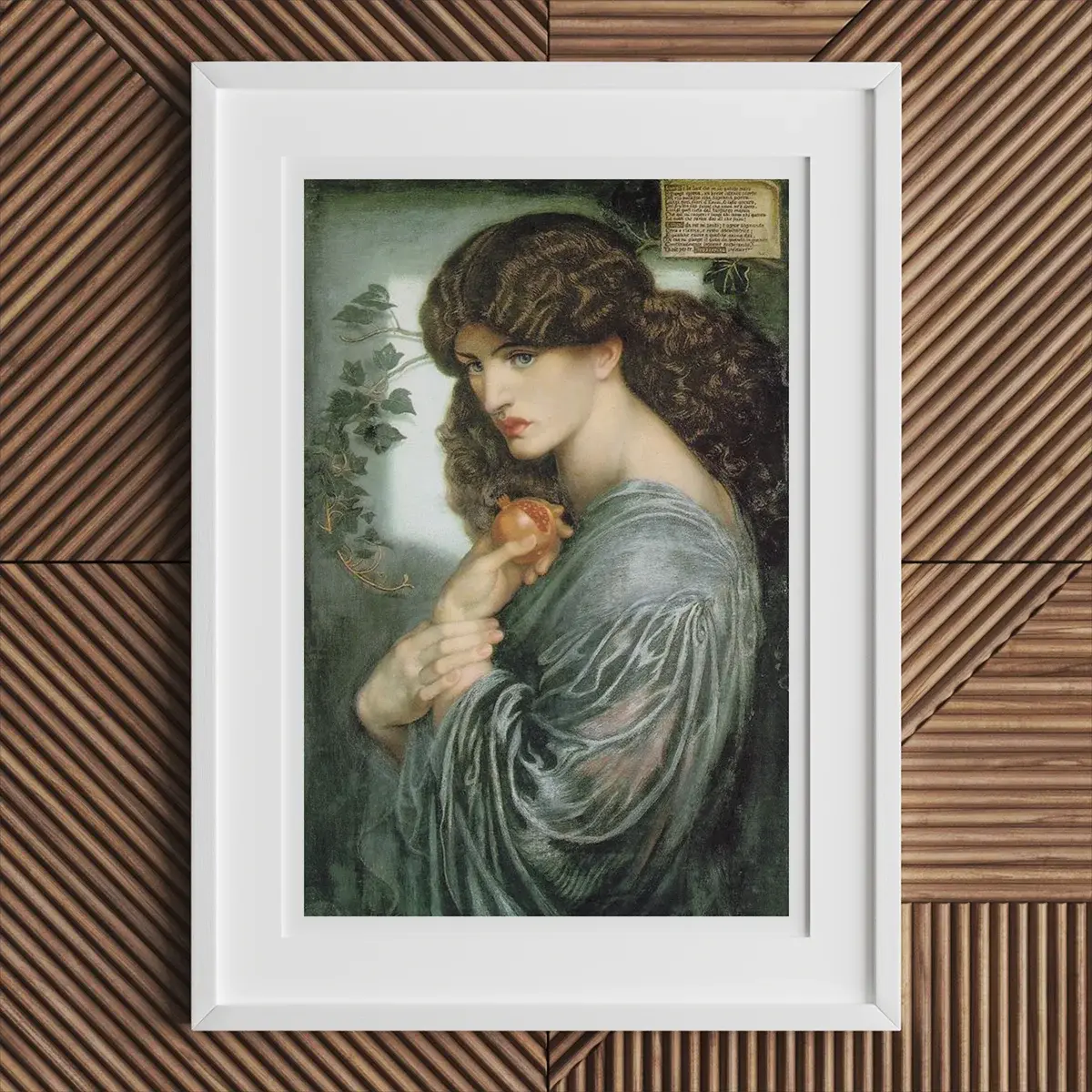
In the century since her death, Jane Morris has been the subject of evolving interpretations – from prejudiced dismissal to celebratory reclamation. For decades she was primarily discussed in relation to the famous men in her life. Only recently have historians and feminists attempted to give Jane her own voice.
The turning point came with the publication of The Collected Letters of Jane Morris in 2012, which for the first time made Jane’s candid correspondence available. Through her letters, we meet a Jane who is witty, caring, politically aware, and often managing delicate situations (from Rossetti’s mental breakdowns to Jenny’s epilepsy) with stoic resilience. As one scholar puts it, “Until [the letters’ publication] Jane Morris had been largely viewed through her relationships – as the wife of William, and the lover and obsession of Rossetti – and as the striking, languid Pre-Raphaelite ideal through her modelling”.
Now, however, a fuller picture emerges: Jane as a “highly capable and complex individual” and an “indispensable collaborator” in William’s projects. In 2019, the exhibition Pre-Raphaelite Sisters at the National Portrait Gallery in London prominently featured Jane alongside other women of the circle, not just as models but as creators.
Curator Jan Marsh highlighted Jane’s embroidery and even her lesser-known attempts at poetry. Such efforts underscore a broader cultural reckoning with the role of women in Victorian art – a recognition that muses like Jane were co-creators of the artistic movements they fueled.
A significant contribution to Jane’s reappraisal is the 2022 biography How We Might Live: At Home with Jane and William Morris by Suzanne Fagence Cooper. This work deliberately places Jane on equal terms with William – the very subtitle suggests a partnership. Cooper examines how Jane’s philosophy of living (informed by her radical domestic practices and social warmth) intertwined with William’s socialist ideals. She argues that Jane’s seemingly private realm of homemaking was in fact profoundly political – their home was “a microcosm of the deeper social adjustments that Jane and William were both seeking”.
By taking Jane’s domestic labor seriously, modern scholarship challenges the old notion that she was a languid ornamental wife. We come to see that hosting dinner parties for revolutionaries, keeping the household running on an even keel, and caring for an ailing child were Jane’s contributions to their shared mission of “how we might live” in a better society. Importantly, Cooper’s biography and others do not shy away from Jane’s contradictions.
She could be both nurturing and aloof, both compliant in appearances and radical in actions. She suffered bouts of ill health and depression (especially as she shouldered the burden of her daughter's severe epilepsy), yet these are now understood not as inherent frailty but as the strain of her circumstances.
The result of all this recent research is that Jane Morris steps out of the shadows, no longer just a face in a painting but a three-dimensional person who made deliberate choices to live artfully and authentically on her own terms.
The Enduring Significance of Jane Morris
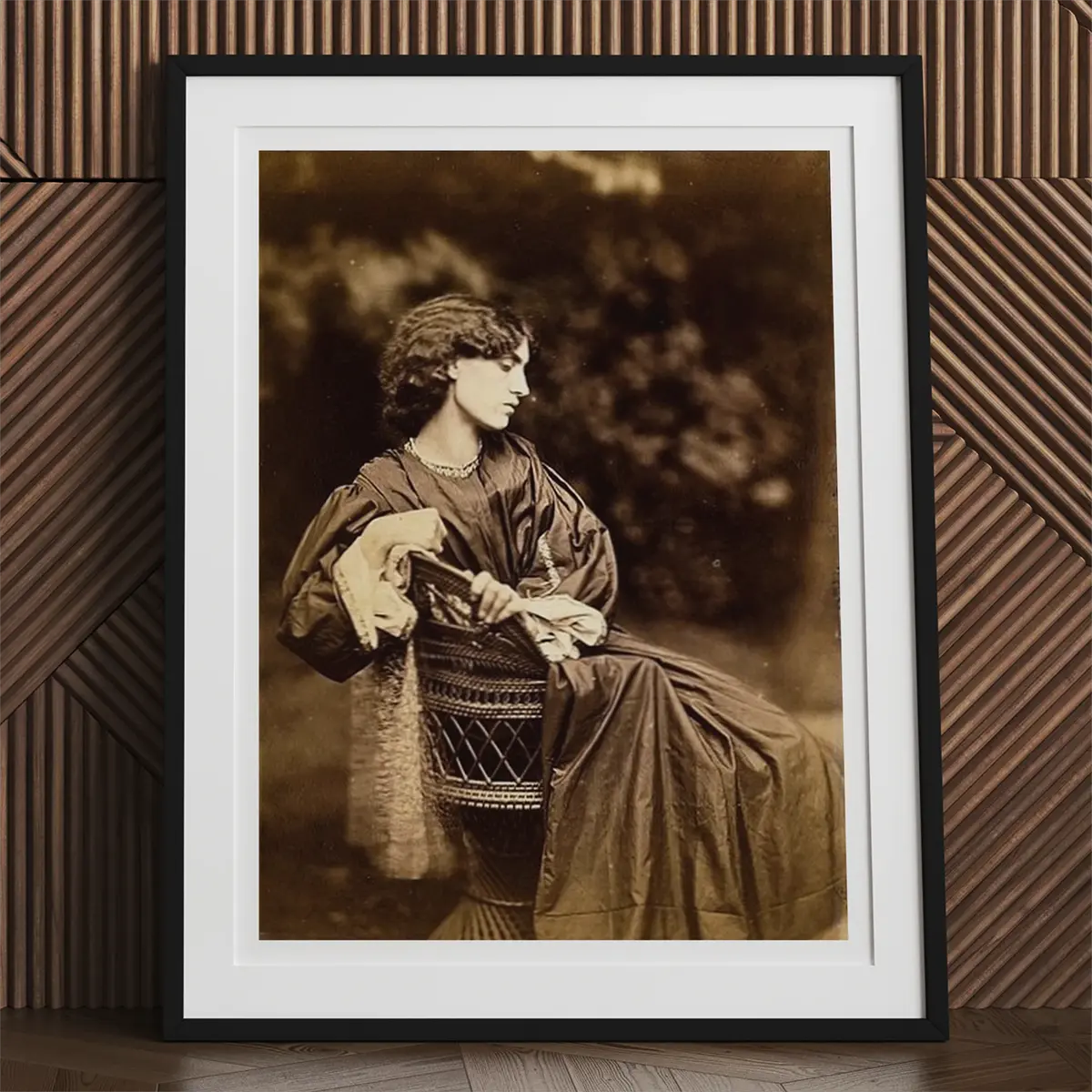
Jane Morris’s life and legacy form a tapestry of complex patterns – at once inspiring and cautionary, intimate and far-reaching. She was the muse who became a maker, transcending the limits imposed on her by Victorian society.
In her own lifetime, Jane harnessed the power of art, beauty, and friendship to transform her circumstances and to influence a generation of artists and designers. She proved that a woman could be both a subject and a creator: the Enchantress of Kelmscott who enchanted painters also sat down at the embroidery frame to conjure beauty stitch by stitch, and sat at the table to shape business deals and social movements over tea and talk.
For the Arts and Crafts movement, she was an unsung engine – without her needlework, networking, and nurturing, William Morris’s design empire might never have fully materialized. For the Pre-Raphaelites, she was the very embodiment of their ideal, giving flesh to their visions and thus altering the course of visual culture. And for modern observers, Jane offers a lens through which to examine the tensions between muse and artist, wife and individual.
Her life invites us to ask: How might we live, when constrained by society’s expectations? Jane answered by quietly bending those constraints, crafting a life that was uniquely her own.
Today, the tall, haunting figure of Jane Morris continues to captivate our imagination – but not merely for her looks. She stands as a symbol of the unrecognized women in art history who, like the warp and weft of a tapestry, held the whole picture together from underneath. The “Silent Muse” has at last been given a voice: through her letters, through scholarly research, and through the acknowledgment that the Arts & Crafts revolution had a woman’s touch at its core.
In museum plaques and art history texts, Jane is now cited not just as a model but as an English embroiderer and designer who influenced the Art Needlework movement and helped redefine decorative arts. Feminist art historians celebrate her as a case study in how a woman of the 19th century could maneuver within and against the patriarchal structures – using marriage, motherhood, and even the role of “muse” to her advantage, until she could express her own creative agency.
In the end, Jane Morris’s enduring significance lies in this blending of art and life. Like a dynamic rhythm in prose, she balanced contrasting roles – devoted mother and intellectual equal, Victorian wife and quiet rebel, muse and artist – creating a rich harmony that was ahead of its time.
The metaphors her life inspires are inseparable from its reality: she was a living Pre-Raphaelite painting, yes, but also the weaver at the loom of the Arts & Crafts ethos. She was Persephone in the underworld of societal limitations, pomegranate in hand, yet each spring she emerged into her own light, cultivating a garden of creativity around her.
More than a century later, we step back and behold the tapestry of Jane Morris’s story – its threads of historical truth and poetic myth interlaced – and we recognize in it an extraordinary portrait of a woman who quietly shaped the course of art and design.
Jane’s legacy, like the finest Morris & Co. patterns, remains vibrant and alive, inviting us to reconsider how beauty, in the right hands, can become a form of influence and how a muse can transform into a master.
Reading List
Fagence Cooper, Suzanne: How We Might Live: At Home with Jane and William Morris
Marsh, Jan (ed.): Pre-Raphaelite Sisters
Parkins, Wendy: Jane Morris: The Burden of History
Sharp, Frank C. and Marsh, Jan ed: The Collected Letters of Jane Morris
Grady, Alyssa: ‘My Lady’s Soul’: The Successes of Elizabeth Siddal & Jane Morris
Caňjuga, Marija: Jane Morris: A Pre-Raphaelite Artist and Muse
The Guardian: Unfaithful, too striking… why William Morris’s wife was painted out of the Arts and Crafts movement
Faulkner, Peter: Jane Morris and her male correspondents
Victoria and Albert Museum: Photographic portraits of Jane Morris by John R. Parsons













